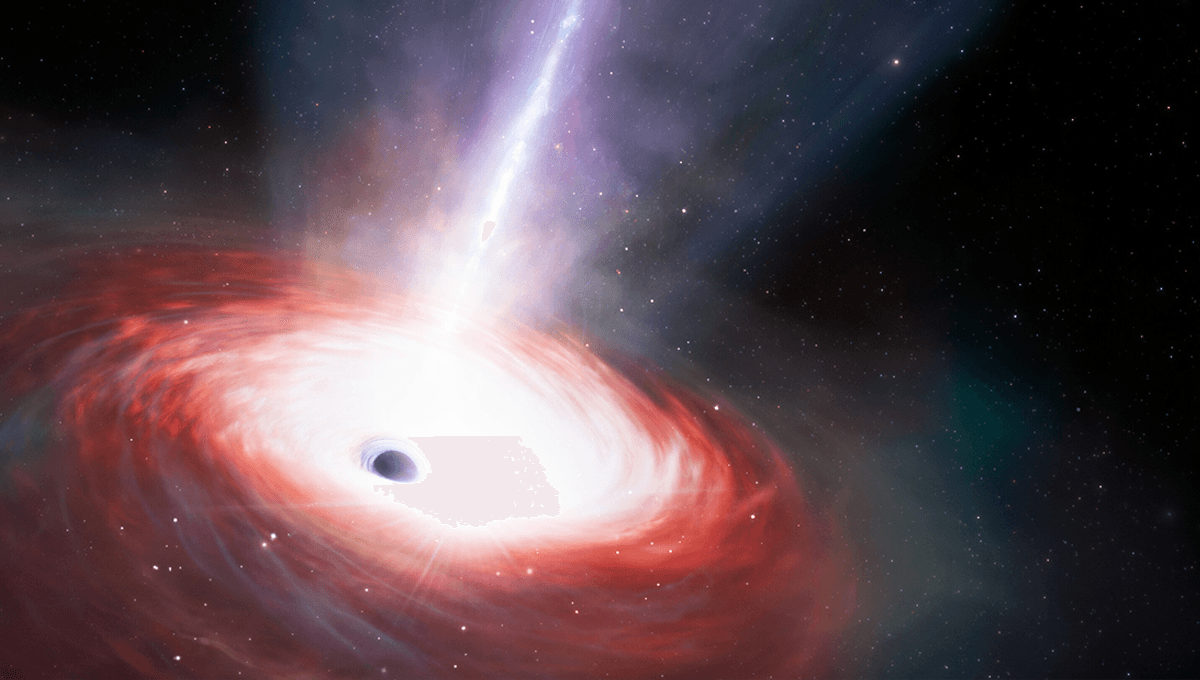
A team of astronomers believe they have found a black hole in the early universe gobbling down matter at a rate of 40 times greater than the Eddington limit.
The team, led by International Gemini Observatory and NSF NOIRLab astronomer Hyewon Suh, took a look at a sample of galaxies from the Chandra X-ray Observatory’s COSMOS legacy survey using the JWST. The galaxies identified are bright in the X-ray spectrum but are not visible in optical and near-infrared spectrums. However, the JWST is a particularly sensitive infrared camera, making observations possible.
Amongst the galaxies looked at was one named LID-568, notable for being particularly bright in X-ray. Due to being unable to determine the precise position using X-ray observations alone, the team used the integral field spectrograph on JWST’s Near Infrared Spectrograph (NIRSpec).
“One unique technology in the NIRSpec that enables it to obtain those 100 simultaneous spectra is a micro-electromechanical system called a ‘microshutter array’. NIRSpec’s microshutter cells, each approximately as wide as a human hair, have lids that open and close when a magnetic field is applied,” NASA explains of the instrument. “Each cell can be controlled individually, allowing it to be opened or closed to view or block a portion of the sky. It is this adjustability that allows the instrument to do spectroscopy on so many objects simultaneously. “
Viewing LID-568 using this instrument allowed the team to see the galaxy and the surrounding region, finding unexpected and powerful outflows of gas around the galaxy’s supermassive black hole.
“This serendipitous result added a new dimension to our understanding of the system and opened up exciting avenues for investigation,” Suh said in a statement.
Seen from just 1.5 billion years after the Big Bang, the team believes this black hole was consuming matter faster than we thought possible. In fact, the team writes in their study that it was “accreting at more than 4,000% of the limit at which radiation pressure exceeds the force of gravitational attraction of the black hole,” known as the Eddington limit.
This doesn’t mean that the black hole is breaking some limit. The Eddington limit is generally applied to stars, being the point at which the outward radiative pressure overcomes gravity and drives a star apart. Black holes have been known to go beyond this limit before now, but it suggests a particularly fast-feeding frenzy, which could help explain other mysteries.
“This extreme case shows that a fast-feeding mechanism above the Eddington limit is one of the possible explanations for why we see these very heavy black holes so early in the universe,” International Gemini Observatory/NSF NOIRLab astronomer and co-author Julia Scharwächter said.
Astronomers have had recent difficulties accounting for the size of supermassive black holes found at the center of galaxies, and the large mass gap between them and ordinary stellar mass black holes. There are suggestions that they could have started from “light seeds” – small black holes that accrete mass until they are large – or “heavy seeds” – larger black holes that formed through the direct collapse of gas clouds without a stellar stage.
“The discovery of a super-Eddington accreting black hole suggests that a significant portion of mass growth can occur during a single episode of rapid feeding, regardless of whether the black hole originated from a light or heavy seed,” Suh explained.
The team believes that the black hole could be undergoing a burst of super-Eddington accretion, and suggested that it could be something that happens episodically. Further follow-up observations are planned using the JWST.
The study is published in Nature Astronomy.
Source Link: Black Hole Found Devouring Matter At A Rate 40 Times Greater Than The Eddington Limit